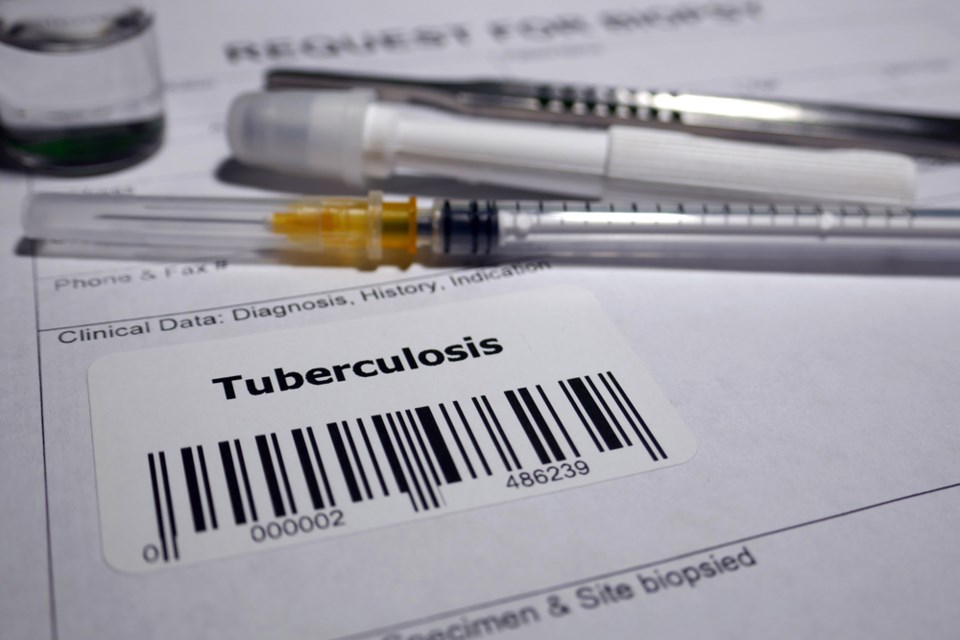A tuberculosis case at New Westminster Secondary School prompted Fraser Health to issue exposure notifications to some students and staff just before March break.
Now a medical health officer has some reassurance for families who were worried by the warning: TB doesn’t spread easily, and it’s “completely treatable” when it does.
The notification involved one person at NWSS who was found to have tuberculosis, Fraser Health has confirmed. That person has not been at the school since the diagnosis and will be in isolation until the B.C. Centre for Disease Control’s TB services team determines they are no longer infectious.
Dr. Maulik Baxi, a medical health officer who specializes in communicable diseases, said tuberculosis remains relatively uncommon in B.C.; BCCDC stats report roughly 15 to 30 cases each month provincewide.
“In British Columbia, TB remains relatively low in numbers compared to some of the other respiratory pathogens, where we see hundreds or even thousands of cases,” he noted.
Baxi walked through some common questions and concerns around tuberculosis in an interview with the Record on Thursday.
We’re breaking it down here.
What happens when a tuberculosis case is diagnosed in B.C.?
Once the BCCDC confirms a case of tuberculosis, the health authority follows a contact management process.
“That is when we identify individuals from their immediate family members, friends and other people who they maybe spent significant time with, and then we expand into workplaces and schools,” Baxi said.
Who gets notified depends on the type of activities they may have been doing and the amount of contact they may have had with the infectious person, he noted.
Because TB is a “very slow-moving” disease without a clear-cut start date for infectiousness, Baxi said the health authority errs on the side of being “over-cautious” in sending notifications.
How does tuberculosis spread?
With pulmonary tuberculosis, because the bacteria that causes it (Mycobacterium tuberculosis) is in the lungs and respiratory system, the bacteria that causes can be spread through coughing, sneezing, laughing or singing.
“If somebody’s around them that inhales the air containing those nuclei, they may become infected,” Baxi said.
But he said the number of people who actually develop the disease, even among those who were genuinely exposed to it, is still small — without treatment, only about five to 10 per cent of those people will develop the disease.
“Even in the same family, let’s say one person is infectious. Not everybody in the family may also even eventually become sick from that,” he said.
How many students and staff at NWSS may have been exposed to TB?
Baxi could not say exactly how many people were notified in this case.
“We did go above and beyond in identification of individuals who might be truly exposed, whether they were in the same classroom, whether they were in some of the other activities, whether they might be students, whether they might be teachers,” he said.
Baxi said those who were found to have potential exposure have been notified directly by Fraser Health, and that notification includes information about what steps they need to take next — including how to get tested.
He said Fraser Health is working closely with School District 40 on notification and arranging testing clinics for those affected.
How is tuberculosis diagnosed?
Depending on the type of tuberculosis, Baxi noted there are different types of tests.
The first step to assess the exposure is a two-step skin test, where a person is given a small dose of injection to assess their exposure. An assessment is done by a public health nurse 48 to 72 hours later to determine if the skin shows the characteristic redness that indicates exposure.
When needed, there are other potential followup tests: respiratory sputum and blood tests, depending on the type of tuberculosis identified.
Active tuberculosis usually lives in people’s lungs, but it can live anywhere in the body or in more than one place at a time.
How is tuberculosis treated?
“TB is a completely treatable disease,” Baxi stressed.
Because it’s bacterial, it’s treated with a regime of antibiotics.
“It does take a bit of time, and a number of different antibiotics are used to make sure that there is no drug resistance, for example,” he said. “For TB, just like it takes some time for the illness to develop, it also does take some time, unfortunately, for it to be completely out of our systems.”
For those infected, that usually means a six-month course of antibiotics.
“But, fortunately, there’s a significant role of human immunity as well in this, and so not a lot of people actually do develop the illness, even if they are exposed,” he noted. “So not everybody will require antibiotics.”
Baxi said most of the people who’ve been notified about exposure in this case likely won’t require antibiotic treatment.
How long is a person with tuberculosis infectious?
The BCCDC’s TB services team monitors people with tuberculosis to determine how long they are infectious and when it’s safe to come out of isolation.
How long a process that is depends on which body system is involved, Baxi noted — whether the disease is in the lungs or in other parts of the body. But he said it’s generally several weeks.
Is it safe to return to NWSS after the tuberculosis exposure?
Baxi noted that, generally speaking, there are no extra cleaning or disinfection practices that need to be followed after a tuberculosis exposure since the disease is spread through droplet nuclei — meaning it won’t still be present once the infectious person is no longer there.
“Because the person is isolating already and they're not at school, we wouldn't have to worry about the additional infection control practices at this time,” he said. “It’s completely safe to return to school once the March break ends.”
Have more questions about TB?
You can check out the BCCDC’s tuberculosis information page.
Follow Julie MacLellan on Twitter @juliemaclellan.
Email Julie, [email protected]





